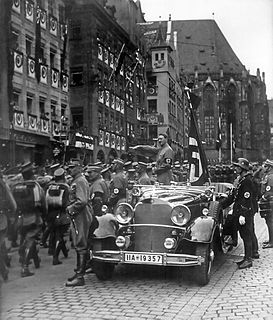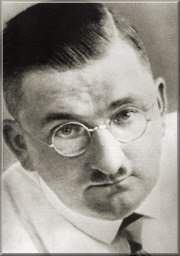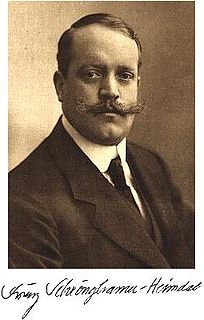
Bavaria, officially the Free State of Bavaria, is a landlocked federal state of Germany, occupying its southeastern corner. With an area of 70,550.19 square kilometres (27,239.58 sq mi) Bavaria is the largest German state by land area comprising roughly a fifth of the total land area of Germany. With 13 million inhabitants, it is Germany's second-most-populous state after North Rhine-Westphalia. Bavaria's main cities are Munich, Nuremberg, and Augsburg.

Augsburg is a city in Swabia, Bavaria, Germany. It is a university town and regional seat of the Regierungsbezirk Schwaben. Augsburg is an urban district and home to the institutions of the Landkreis Augsburg. It is the third-largest city in Bavaria with a population of 300,000 inhabitants, with 885,000 in its metropolitan area.

The White Rose was a non-violent, intellectual resistance group in the Third Reich led by a group of students including Hans and Sophie Scholl. They attended the University of Munich. The group conducted an anonymous leaflet and graffiti campaign that called for active opposition to the Nazi regime. Their activities started in Munich on 27 June 1942, and ended with the arrest of the core group by the Gestapo on 18 February 1943. They, as well as other members and supporters of the group who carried on distributing the pamphlets, faced show trials by the Nazi People's Court (Volksgerichtshof), and many of them were sentenced to death or imprisonment.

Ludwig Joseph Brentano was an eminent German economist and social reformer.

Jakob Grimminger was a German Nazi Party and Schutzstaffel (SS) member, known for being the standard-bearer of the Blutfahne, the centrepiece flag of the Nazi movement's ceremonies.

Dietrich Richard Alfred von Hildebrand was a German Roman Catholic philosopher and theologian.

Christoph Ananda Probst was a German student of medicine and member of the White Rose resistance group.

Carl Albert Fritz Michael Gerlich was a German journalist and historian, and one of the main journalistic resistors of Adolf Hitler. He was arrested, later killed and cremated at the Dachau concentration camp.

Adolf Hitler's rise to power began in Germany in September 1919 when Hitler joined the political party then known as the Deutsche Arbeiterpartei – DAP. The name was changed in 1920 to the Nationalsozialistische Deutsche Arbeiterpartei – NSDAP. It was anti-Marxist and opposed to the democratic post-war government of the Weimar Republic and the Treaty of Versailles, advocating extreme nationalism and Pan-Germanism as well as virulent anti-Semitism. Hitler attained power in March 1933, after the Reichstag adopted the Enabling Act of 1933 in that month, giving expanded authority. President Paul von Hindenburg had already appointed Hitler as Chancellor on 30 January 1933 after a series of parliamentary elections and associated backroom intrigues. The Enabling Act—when used ruthlessly and with authority—virtually assured that Hitler could thereafter constitutionally exercise dictatorial power without legal objection.

Events in the history of Munich in Germany.

TSV Schwaben Augsburg is a German football club which is part of a larger sports association whose origins go back to the 1847 formation of the gymnastics club Turnverein Augsburg. The association's football department was formed in 1907 and after 29 March 1919 played as Schwaben Augsburg.

Hans Beimler was a trade unionist, Communist-Party official, deputy in the 1933 Reichstag, an outspoken opponent of the Nazis and a volunteer in the international brigades fighting for the Spanish Republic.
Michael Swierczek is a German politician who lives in Munich.

Gau Swabia was an administrative division of Nazi Germany in Swabia, Bavaria, from 1933 to 1945. From 1926 to 1933, it was the regional subdivision of the Nazi Party in that area.

Karl Wahl was the Nazi Gauleiter of Swabia from the Gau inception in 1928 until the collapse of Nazi Germany in 1945.
Albert Roßhaupter was a Bavarian politician of the Social Democratic Party of Germany (SPD) and editor of several newspapers.

Franz Schrönghamer-Heimdal, was a Bavarian Catholic writer and painter.
Erich Emminger was a German lawyer and Catholic politician of the Center Party (Zentrum) and later of the Bavarian People's Party (BVP).

Maximilian Joseph Lingg, from 1902 Ritter von Lingg, was the 78th Bishop of Augsburg.














